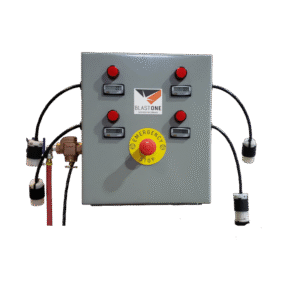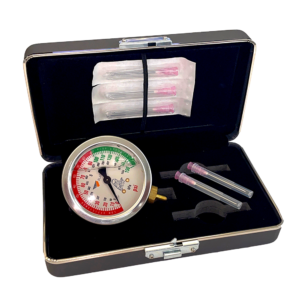Superior know how
How To Increase Blasting Productivity
Boosting productivity on your job site starts with effective measurement. By tracking essential metrics like employee hours, abrasive usage, and nozzle time management, you can unlock up to 30% more efficiency. Implement advanced tools like blast timers, optimize materials handling, and encourage daily reports to identify and resolve productivity barriers. Remember, what gets measured, gets managed, and these simple strategies can transform your job site efficiency and profitability.
Ready to boost your productivity? Contact us today to schedule a site visit for expert consulting and personalized productivity improvements.
STARTING TODAY!
Each year BlastOne visits more client jobsites than all our global competitors combined. That’s thousands and thousands of projects over the years. We do this to both consult and learn. And when it comes to productivity, we can definitely state that the Golden Rule of Productivity – the absolute first principle is “What gets measured, gets managed.”
The trap that most companies fall into, the reason they cannot break certain thresholds of productivity, is they are not measuring ENOUGH variables.
We’re going to discuss three levels of metric awareness that correspond to three different levels of productivity. I’m going to reveal 3 productivity tactics that will increase your productivity up to 30% – and one of them you can implement starting today!
First, it’s common for all companies to measure things like
• Employee work hours
• Pounds of Abrasive used
• Equipment downtime
• Fuel consumption
These are basic metrics that give you a bare minimum understanding of your productivity.
The next level of productivity measures, not only the previous items, but things like
• Nozzle pressure
• Nozzle orifice wear
• Atmospheric conditions
• Metering valve wear
• The right grade of abrasives
• Maintenance schedules
All those measurements deal with either the tools of the trade or jobsite conditions. And let’s say, for productivity’s sake, all those items have been measured and then optimized. What should you measure next? How do you increase your productivity beyond optimizing those variables?
The third level of productivity measures not only the tools or conditions – but also how the workers utilize those tools or conditions.
Let’s explain with 3 examples – the final one we recommend you start implementing today.
Example #1 – Measure the individual blast lines to determine the actual amount of time the nozzles are running. This is accomplished with pneumatic blast timers hooked into the deadman. These measurements are illuminating. You may have a team of three blasters who worked an 8 hour shift… but what percentage of that shift was actual blasting? How can you know for sure?
On a lot of jobsites, a substantial amount of time is spent on unproductive work which might involve shifting scaffold, prepping, filling pots with abrasive, lunch breaks, those sorts of things.
Without exception, every customer we’ve met that has put a Blast timer in place has gotten more productivity out of their teams. Not because they’re pushing people harder, not because they’re overdriving workers… but because management now becomes aware of all the little issues that chip away at the true nozzle time. Management begins to see the startling impact of having to move scaffolding – which may take hours. Realizing the effect this has on nozzle time, the idea of renting a Boom Lift, which originally seemed an unnecessary expense, now makes financial sense. It will increase productivity. Nozzle time will increase.
Here’s another common scenario. Let’s pretend nozzle time is low. You question the blaster and discover his small blast pot only lasts 45 minutes to an hour before he must stop and refill. He then takes a smoke break, moves his hoses – and you’ve lost 20 minutes of blast time in the process. 20 minutes every hour for an 8 hour shift is 2 hours and 40 minutes of lost productivity. It makes more financial sense to upgrade to bulk pots and keep your team active than having them constantly refill small pots.
What gets measured, get’s managed.
Example #2 – deals with blast room environments. Most companies, when they design a blast room give great focus and attention toward making sure the room is the right size. Almost no deliberation is spent on materials handling. Materials handling in a blast room environment is the method in which you bring your work product in and out of the booth. Getting your materials handling right can potentially deliver a 10%-30% improvement in productivity. Moving items in and out of the booth is non-productive activity. It’s necessary, but non-productive. If your team only has 1 cart – after one job is complete, they will need to spend time removing the product from the blast room, unloading it from the cart, loading the next product onto the cart and delivering it back to the room. Depending on the size of the materials, this might take 5-30 minutes. In the meantime, the blasting equipment is idle and not earning you money. It would be more cost effective to have additional work carts, with product already loaded, so the transition between jobs is minimal.
What gets measured, gets managed.
And finally Example #3 – This is something you should implement starting today – Insist on daily reports from your blasters. Now that may seem like we’re talking about paperwork, but that’s not what we’re suggesting. We like to refer to it as uncovering What Made My Job Difficult Today. WMMJDT. And here’s how it works. At the end of each day, each blaster reports the number of hours logged at their nozzle (ideally using the blast timers installed on their deadman) and explain the number. For example… Mark logs 4 hours and reports that he had to spend half a day trying to fix the blast hose that was down. Vince lost 2 hours filling his small blast pot.
It’s important to do this daily when the reasons are still clear in the blasters memory. If you try and log this nozzle time at the end of the week, memories get cloudy as to what actually caused downtime. “We had issues with the compressor on Tuesday… or was that last week?” They sometimes just forget all the little distractions that made them less productive. Waiting until the end of the week also prevents you from correcting something early on, and in the meantime – productivity suffers.
With a daily What Made My Job Difficult report, your team can reveal all those legitimate problems and hopefully management will be able to recognize patterns and implement solutions to eliminate those problem. In doing so, not only do you make your workers jobs easier – you increase overall productivity and profit.
What gets measured, gets managed!
Finally, here are three things you can do today to help your overall productivity.
1) Insist on daily reports – find out what is making your team’s job difficult. They’ll appreciate this – and your productivity will increase.
2) Order some Blast timers from BlastOne. They’re very easy to install and our customer service will be happy to explain exactly how to do this
3) Optimize your equipment – and pay attention to how your workers use that equipment.
Remember if you want to improve your productivity – what gets measured, gets managed.
 My Account
My Account





